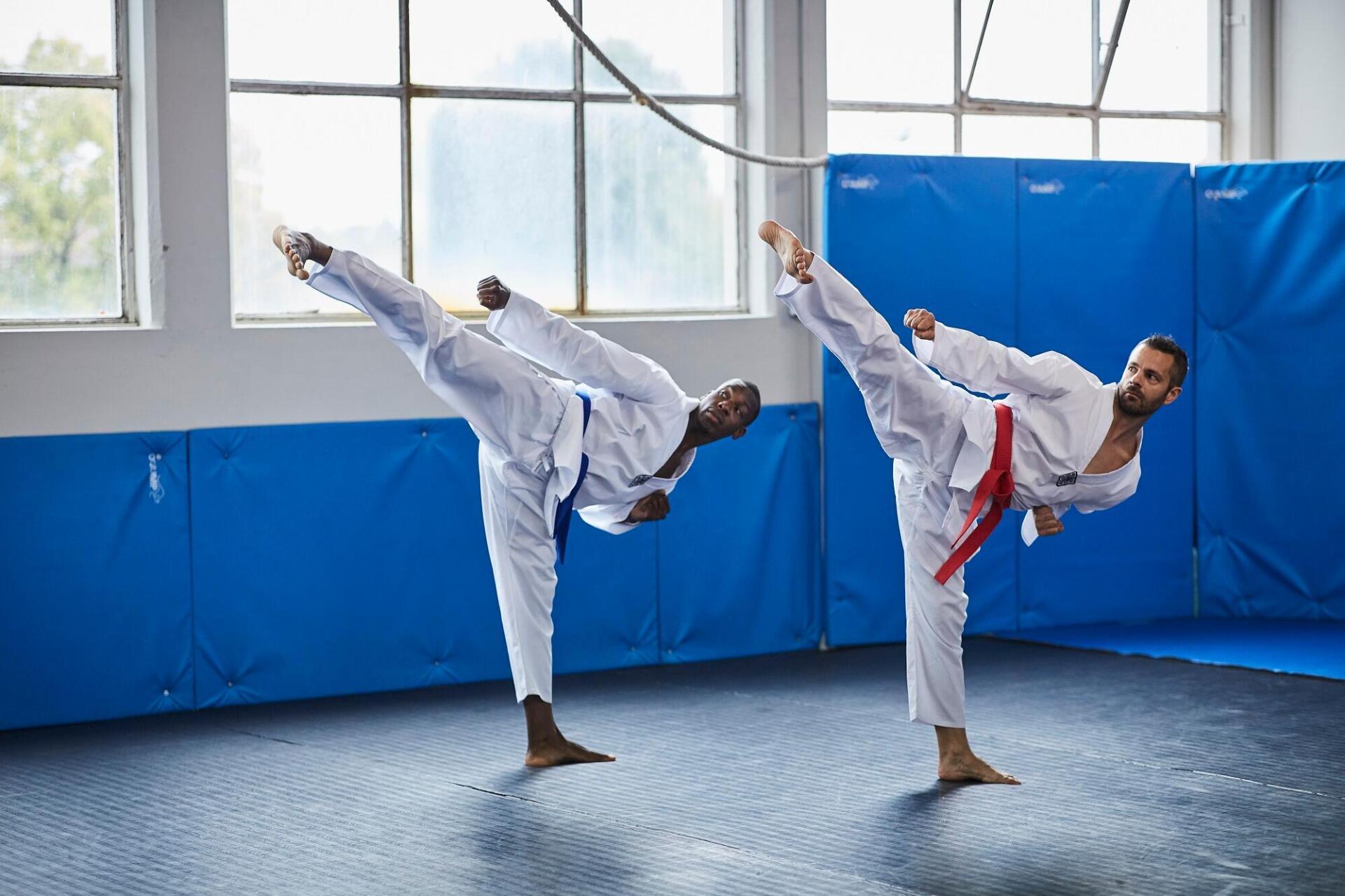Taekwondo basics
Taekwondo is a martial art based on strikes (instead of grapples), where you learn punching techniques but focus on kicking techniques.
During a taekwondo lesson, poomse (form, imaginary combat against one or more adversaries) and combat against a partner help develop your techniques. Learning taekwondo involves learning basic techniques, combat (traditional combat between an attacker and a defender) and self-defence techniques.
Two main forms are exhibited in competition: combat and technique.
Taekwondo in its most well-known format, combat, has been an Olympic sport since 2000. It requires the wearing of suitable protection. Strikes are only allowed above the waist and the points a combatant receives are allocated based on the level of difficulty of the technique (punch, kick or hook kick) and level (chest or head).
The technique competition is based on the individual performance of poomse in front of a jury. A maximum score of 10 points is awarded by the judges according to the precision of the techniques and performance given (speed, rhythm, power, etc.).


